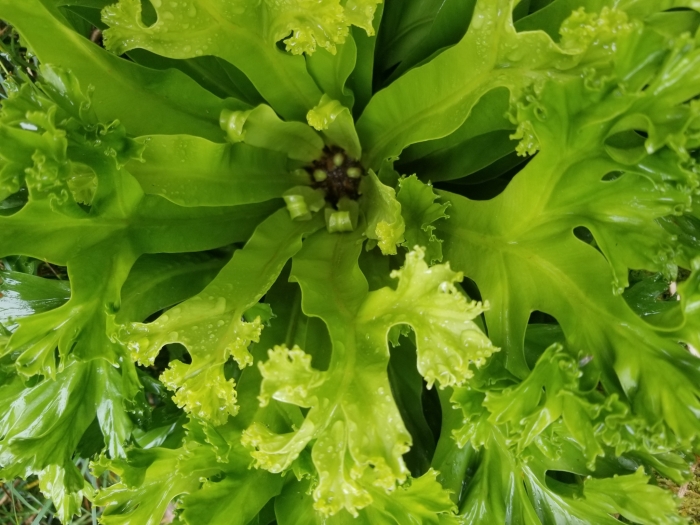Fishtail Fern
(Microsorum punctatum)
Fishtail Fern (Microsorum punctatum)
/
/

© Micki Colbeck
CC BY 4.0
Image By:
© Micki Colbeck
Recorded By:
Copyright:
CC BY 4.0
Copyright Notice:
Photo by: © Micki Colbeck | License Type: CC BY 4.0 | License URL: http://creativecommons.org/licenses/by/4.0/ | Uploader: mickicolbeck | Publisher: iNaturalist |
























Estimated Native Range
Summary
Microsorum punctatum, commonly known as Fishtail Fern, is an evergreen fern that can function as a facultative epiphyte or grow terrestrially. It is native to tropical rainforests and humid forests in Africa, Asia and the Pacific, where it often grows on tree trunks and branches but can also be found in the understory on moist, well-drained soil. This species typically features dark brown scales on its rhizome and lanceolate leaves that can reach up to 21 inches in length, resembling the tail of a fish, hence its common name.
Fishtail Fern is valued for its lush, green foliage and versatility in cultivation. It is used in traditional medicine in Assam, where the juice from the fronds is employed as a purgative, diuretic, and wound healing agent. In gardens, it serves as an attractive ornamental plant, suitable for shaded areas, hanging baskets, or as a ground cover in tropical-themed landscapes. It prefers high humidity, indirect light, and consistently moist soil but is intolerant of waterlogged conditions. While generally disease-resistant, it can suffer from root rot if overwatered.CC BY-SA 4.0
Fishtail Fern is valued for its lush, green foliage and versatility in cultivation. It is used in traditional medicine in Assam, where the juice from the fronds is employed as a purgative, diuretic, and wound healing agent. In gardens, it serves as an attractive ornamental plant, suitable for shaded areas, hanging baskets, or as a ground cover in tropical-themed landscapes. It prefers high humidity, indirect light, and consistently moist soil but is intolerant of waterlogged conditions. While generally disease-resistant, it can suffer from root rot if overwatered.CC BY-SA 4.0
Plant Description
- Plant Type: Fern
- Height: 3-10 feet
- Width: 3-4 feet
- Growth Rate: Slow, Moderate
- Flower Color: N/A
- Flowering Season: Non-Flowering
- Leaf Retention: Evergreen
Growth Requirements
- Sun: Part Shade, Full Shade
- Water: Medium
- Drainage: Medium
Common Uses
Border Plant, Low Maintenance, Potted Plant
Natural Habitat
native to tropical rainforests and humid forests in Africa, Asia and the Pacific, where it often grows on tree trunks and branches but can also be found in the understory on moist, well-drained soil
Other Names
Common Names: Climbing Bird’s Nest Fern, Lao Guan Cai
Scientific Names: , Microsorum punctatum, Acrostichum punctatum, Aspidium microcarpon, Colysis irioides, Drynaria irioides, Drynaria obtusata, Drynaria polycarpa, Drynaria polycarpos, Drynaria pulverulenta
GBIF Accepted Name: